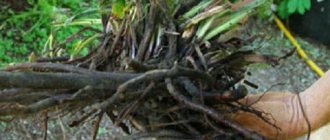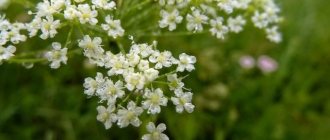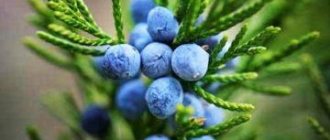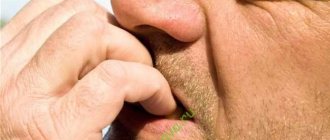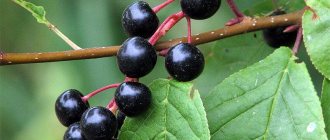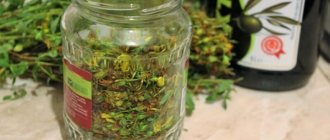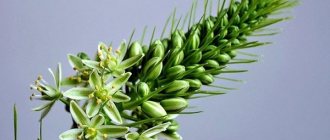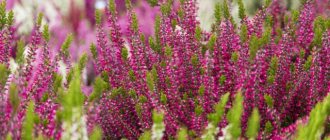Area
There are about 600 species of the genus Dioscorea. Most of them grow in the tropical zone. However, some species take root well in the temperate zone (usually in the mountain forest). These include Thamus vulgaris.
This plant can be found in Crimea, Central Asia, and the Caucasus (Armenia, Georgia, Azerbaijan). Less common in Ukraine, Moldova, and Belarus. In Europe it grows in the southern regions, in the countries of the Iberian and Apennine peninsulas. The liana can also be seen in northern Africa and Western Asia.
The most valuable species, besides Thamus vulgaris, are Dioscorea Caucasus and Nippon. Dioscorea Caucasica grows in the western regions of Transcaucasia and is listed in the Red Book. Dioscorea nipponensis grows in the Far East. Contains steroid saponins, from which hormonal drugs are obtained.
Adam's root. Botanical description
You need to know where the plant grows and what it looks like if you want to take advantage of its medicinal abilities. Thamus is a vine up to 5 meters long, the stems are equipped with tendrils and thorns with which it clings to support. It blooms with small yellowish-green flowers collected in corymbose and umbellate inflorescences. The fruit is a round red berry up to 10 mm in diameter, containing up to 6 dark brown seeds. The berries are poisonous and should not be taken orally. The root of the Adam's apple is tap-shaped, thick, dark brown on the outside, and white on the inside. It has a juicy, oily consistency, its length can reach one meter, and its weight can reach 5 kg. The leaves are serrated along the edges, rough, alternately planted. The leaf blade is ovoid in shape with a heart-shaped point at the base.
photo of Adam's root during fruiting period
It grows in the tropical and temperate zones, in Central Asia, Europe, Belarus, Ukraine, Moldova, and the Caucasus. Prefers to grow on rocky soil of mountain forests.
There are more than 500 species of plants, among them the most famous are Dioscorea Caucasus and Nippon. Caucasian is listed in the Red Book and grows in Transcaucasia, Nipponian grows in the Far East and contains a large amount of steroid saponins, which are used for the manufacture of hormonal drugs.
Biochemical composition of thamus root
The beneficial properties and use of Adam's root are due to the biologically active substances included in its composition:
- Tannins;
- Organic acids (oxalic, formic, etc.);
- Fatty oils;
- Saponins and glycosides;
- Pectin;
- Resin and mucus;
- Alkaloids and steroids;
- Minerals;
- Kumarinov;
- Urea;
- Carbohydrates and starch.
Medicinal properties
Thamus vulgaris or Adam's root has the following medicinal properties on human health:
- Relieves pain, inflammation and swelling in diseases of the musculoskeletal system;
- Strengthens the walls of blood vessels and capillaries;
- Saponins, interacting with blood proteins and cholesterol, prevent the formation of plaques and chronic arterial diseases;
- Lowers blood pressure, improves cardiovascular activity, improves blood circulation;
- Stops bleeding and has an anti-edematous effect;
- Acts as a laxative for constipation;
- As a general tonic it helps with colds, ARVI and flu;
- Accelerates tissue regeneration and healing of fractures and sprains;
- Removes excess fluid from the body, which is effective for inflammatory processes in the kidneys and bladder;
- Has a beneficial effect on the female reproductive system, normalizes hormonal levels, helps with endometriosis, polyps, ovarian cysts;
- Helps maintain male health and potency;
- Helps against hemorrhoids, resolves hemorrhoids;
- Expectorant action helps in treating cough;
- Used for cosmetic purposes to strengthen hair and remove age spots and freckles on the skin.
The root of the plant has the greatest medicinal value
The plant has anti-inflammatory, analgesic, regenerating, hemostatic, wound-healing, vasodilating, anti-sclerotic, blood purifying, laxative and restorative effects.
Healing effect
Medicinal properties of Adam's root:
- regenerating;
- painkiller;
- diuretic;
- hemostatic;
- wound healing;
- bronchodilator;
- vasodilator;
- laxative;
- anti-inflammatory;
- antisclerotic;
- blood purifying;
- restorative.
Useful material:
- glycosides;
- saponins;
- carbohydrates;
- fatty acid;
- steroids;
- organic acids (in particular, formic, oxalic);
- tannins;
- coumarins;
- starch;
- urea.
A high content of saponins is beneficial because these substances interact with cholesterol and blood proteins. This in turn prevents the appearance of plaques and chronic arterial diseases.
Blank
It is better to harvest Adam's root rhizomes before flowering or in mid-autumn. During harvesting, precautions should be taken and gloves and protective clothing should be used. The leaf blade of the vine irritates the skin and can cause burns.
Digging up the root is difficult, since the lateral processes of the rhizome are tightly intertwined with the roots of other plants. The rhizomes removed from the ground are cleaned of adhering soil and cut into plates. Drying of raw materials is carried out under a canopy or in a shaded place with good ventilation. The place chosen for harvesting roots must be dry. Otherwise, mold may appear on the plates.
Finished pieces of dried rhizome have a solid structure and are stored for about two years in room conditions, with good ventilation.
In the case of using fresh rhizomes, storage is carried out for a short time in a cool place. A refrigerator is better for this.
We advise you to read: Golden volodushka - use in folk medicine
List of indications
What does the plant cure? What are the indications for its use in folk and scientific medicine?
- Treatment of varicose veins and thrombophlebitis. Adam's root strengthens venous walls, prevents enlargement of nodes, ensures normal blood flow, reduces swelling, and relieves inflammation.
- Heart and blood vessels. Refers to mild antihypertensive herbal remedies. Reduces blood pressure and normalizes heart function. Prescribed during the rehabilitation period after a stroke.
- Muscles, joints and spine. The list of indications includes the following diagnoses: gout, rheumatism, radiculitis, osteochondrosis, bruises, dislocations, heel spurs, polyarthritis, bursitis, muscle strain, sciatica. The drug relieves inflammation, swelling and pain.
- Digestive organs. Helps with liver cirrhosis, stomach ulcers, colitis, hemorrhoids. Acts as a laxative for chronic constipation.
- Respiratory system. They drink it for colds and ARVI as a general tonic. It also helps with the influenza virus (acts as an antiviral drug), bronchitis, tuberculosis, pneumonia, bronchial asthma, and pleurisy.
- Urinary system. Decoctions and tinctures help remove excess fluid and help with inflammation of the kidneys and bladder.
- Benefits for men. Restores male strength. Most often, alcohol tinctures are taken for a long course for impotence. It is better to resort to complex herbal medicine.
- Benefit for women. It has a beneficial effect on the reproductive system, restores hormonal levels, so they drink it for conception. Other indications for use: ovarian cyst, endometrial growth outside the layer, hormonal imbalances, polyps.
- External use of Adam's root. Promotes rapid healing of tissues, treats bruises, hematomas, contusions, bruises. Also, warts, skin rashes due to psoriasis, eczema, dermatitis, and age spots are treated with water decoctions and thamus vulgaris powder. Alcohol tinctures are used in the form of rubs and compresses for joint diseases and muscle pain. It is useful to rinse your hair with infusions - for strengthening and rapid growth.
The main contraindications to the use of Thamus vulgaris: pregnancy, breastfeeding, childhood. If you have any chronic diseases, consult a doctor. The plant is poisonous. In case of overdose, it can cause vomiting, dizziness, weakness, and a severe allergic reaction in the form of urticaria, swelling, and itching.
Indications. What does Adam's root cure?
The medicinal abilities of the plant are recognized by official and traditional medicine, as well as homeopathy. Adam's root for joints and the musculoskeletal system is an effective medicine. It treats diseases of bone tissue, muscles and ligaments. Reduces pain in radiculitis, rheumatism, osteochondrosis, sciatica, gout, arthrosis, arthritis, heel spur, increases joint mobility. Due to the high content of minerals, it promotes rapid recovery from fractures, injuries, sprains, bruises, dislocations, and accelerates the resorption of bruises and hematomas.
The vasodilating properties of Adam's root are used in the treatment of venous diseases, thrombophlebitis, varicose veins, and hemorrhoids.
The use of thamus is effective in eliminating skin pathologies such as trophic ulcers, furunculosis, eczema, age spots, warts, etc.
Thanks to its anti-inflammatory and antiseptic properties, remedies with Adam's root help with bronchitis, peptic ulcers, cystitis, and nephritis.
Adam's root: use and preparation at home
Recipes from Adam's root are collected in ancient herbalists and modern herbal reference books. It is important to stick to the dosage and remember that Adam's root is poisonous. It is allowed to take infusions and tinctures orally for one month, after which it is necessary to take a break from treatment.
Herbal remedies
What is the use of Adam's root in modern pharmacology? Preparations based on it are available without a prescription and are not classified as medicines. Dioscorea caucasica is officially registered in the pharmacopoeia, and Dioscorea vulgaris (Adam's root) is classified as a dietary supplement. What do herbal pharmacies offer?
- Balm. Has a warming, soothing, anti-inflammatory effect. It helps well with bruises, sprains, inflammation of joints, muscles and nerves. Improves blood circulation, joint mobility, relieves muscle tension. In addition to Adam's root, it contains: fir, pine oil, mustard.
- Alcohol tincture. Use internally and externally. The instructions indicate the daily dose: 75 drops of tincture. It is recommended to dilute in a small volume of water, take half an hour after meals, no more than 3 times a day. The course of treatment lasts 30 days. After a two-week break, treatment is repeated according to indications and doctor’s recommendations.
- Dry raw materials. It is better to purchase from certified manufacturers of medicinal preparations to avoid counterfeiting. Homemade infusions and tinctures and powder for skin treatment are prepared from the chopped dried root.
Alcohol tinctures
Herbalists most often describe recipes for tinctures with vodka, but you can also use high-quality alcohol 40%.
Preparation of Adam's root tincture
- Take 200 g of raw materials.
- Pour in ½ liter of vodka.
- Leave for 2 weeks, shake regularly.
- Strain.
To prepare and store the tincture, you need to choose an opaque glass container. The root loses its beneficial properties when exposed to light. Due to its high concentration, this tincture is used only externally. For internal use, other proportions are recommended: for ½ liter of vodka - 100 g of dry raw materials. Instead of vodka, you can use dry wine. Wine tinctures are useful for diseases of the urinary system. Honey is also added to tinctures.
Recipe for tincture for intervertebral hernia
- Take 1 tbsp. l. dry raw materials.
- Pour in 500 ml of alcohol (preferably 70%).
- Leave for 10 days.
- Strain.
Dilute 1 tbsp. l. in 50 ml of water, take no more than 3 times a day. The same recipe for Adam's root tincture is useful for joints, cervical, thoracic, and lumbar osteochondrosis.
Against varicose veins, it is better to combine thamus with horse chestnut and Japanese sophora. You can prepare an oil extract from Dioscorea vulgaris and rub it into the skin and joints for back pain. An ointment is prepared from butter (300 g), honey (300 g) and root powder (30 g). It is rubbed in for cramps in the calf muscles, bruises, sprains, and varicose veins. You can also take 1 tsp orally. after meals in the treatment of bronchitis, pneumonia, bronchial asthma.
Infusion
Water infusions have fewer side effects if the dosage is followed. This dosage form is recommended for all of the listed symptoms and diagnoses.
Preparation
- Take 1/2 tsp. dry crushed root.
- Pour a glass of boiling water.
- Leave for 2 hours.
- Strain.
Drink 1 tbsp half an hour after eating. l. three times a day. Also used externally.
Poultices
There are many positive reviews about the effect of Adam's root poultices. Most often they are used for rheumatic and muscle pain, spurs, diseases of the sciatic nerve, sprains and bruises, and skin problems.
Preparation
- Take 2 tbsp. l. crushed raw materials.
- Pour boiling water over it.
- Leave to steam for 5 minutes.
- Strain.
The hot herb is wrapped in cotton cloth or gauze and applied to the sore spot for several hours. Such procedures can be done 2 times a day.
Adam's root in folk medicine is the plant of first choice for joint diseases and circulatory disorders. The plant is also used in the treatment of female diseases, hemorrhoids, respiratory inflammation, ARVI and influenza, complications after a stroke, and to increase potency in men. Externally used for bruises, bruises, sprains, psoriasis, eczema, warts, trophic ulcers.
Source
Use in folk medicine
Adam's root is widely used in medicine, due to its composition rich in beneficial substances. Rich in tannins, saponins and pectins, Thamus improves blood circulation and has an anti-inflammatory effect.
Steroids cleanse the blood and blood vessels. The oils contained in the plant relieve pain and regenerate skin damage. The composition of Adam's root includes alkaloids, essential oil, oxalic and formic acid, resins and lycopene, trace elements and coumarins.
The action of the constituent components of Thamus has the following effect during use:
- diuretic
- restorative
- bronchodilator
- antisclerotic
- hypoglycemic
During the treatment, the medicinal plant:
- heals wounds;
- has a laxative effect;
- dilates and cleanses blood vessels and blood;
- relieves pain and stops bleeding;
- relieves inflammation.
We should not forget that Adam's root is a poisonous plant, and it can only be used for treatment in consultation with a doctor and strictly following the recommended dosage.
If the dose is exceeded, side effects may occur:
- attacks of dizziness;
- vomit
- prostration;
- indigestion;
- allergic rashes and skin itching.
We recommend reading: Beneficial properties of wormwood and contraindications for use
Treatment with Tamus is prohibited for pregnant and nursing mothers, children under 5 years of age and persons prone to intolerance to certain components of the plant.
Indications for use
A decoction, tincture of Adam's root for joints or balm Joint Doctor Adam's root is used to treat:
- rheumatoid arthritis of fingers and toes,
- gouty arthritis,
- degenerative changes in cartilage tissue,
- injuries to tendons, muscles and joints,
- arthrosis,
- bursitis of various nature.
The product effectively eliminates pain, reduces swelling of joints and restores mobility. Correct use of medicines from Adam's root will allow you to forget about joint pain for a long time.
Preparation and storage of plants
The ideal time for root harvesting is considered to be spring (before flowering) or autumn. Before you start collecting, it is recommended to wear protective clothing and gloves to prevent burns from contact with the leaves.
Digging out the root is quite difficult, because it is intertwined with the root system of bushes and herbs growing nearby. The extracted fragments of the underground part of the plant are cleaned of soil residues and cut into small pieces or plates.
For proper preparation, you need to dry it in a well-ventilated, shaded place. Avoid direct exposure to sunlight so that beneficial components do not lose their properties under the influence of ultraviolet radiation.
The workpieces are stored in a dry room equipped with a ventilation system at room temperature. Air humidity should be within 60%. The ideal storage containers are canvas bags or cardboard boxes.
Dried roots have healing properties for two years, after which most substances lose their properties.
Areas of application of thamus in medicine
Adam's root is widely used as a raw material for obtaining and preparing means for treating painful conditions of elements of the musculoskeletal system: muscles, joints, bones. The plant is also used for the therapeutic correction of pathologies of other systems.
Benefits of thamus for the musculoskeletal system
Traditional medicine can offer a significant number of formulations of medicinal products for external use: tinctures, decoctions, ointments, powders, balms.
The most common pathologies of the musculoskeletal system that are treated with thamus include:
- osteochondrosis;
- deforming osteoarthritis;
- rheumatism;
- radiculitis;
- arthritis;
- gout;
- sciatica;
- bursitis;
- heel spur:
- injuries: dislocations, sprains, bruises.
Alcohol tinctures of thamus root are intended for rubbing into the skin: this remedy, along with a decoction for applying compresses, relieves pain. In addition to the analgesic effect, such folk compositions have an anti-inflammatory effect and stimulate regenerative processes in tissues.
Patients note that after using medicinal compositions based on Adam’s root, pain decreases, the usual range of movements in the joints returns, and crunching in the joints goes away.
The consequences of traumatic injuries can also be corrected using thamus. Hematomas disappear faster, and elements of the musculoskeletal system are restored more intensively. A powder is prepared from the roots, which can be used to treat certain types of wounds.
Read the article about traditional treatment of a knee joint with a bruise.

